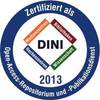Preview |
PDF, English
- main document
Download (97kB) | Terms of use |
Abstract
Multi-station terrestrial laser scanning (TLS) is widely used to measure important forest variables. Wind effects like branch duplication remain a significant data quality issue in TLS point clouds and can lead to substantial errors in subsequent processing steps. Although scanning in windless conditions is recommended, it is not always practical. The objective of this study is to present a method to transform wind-affected TLS point clouds into possible windless point cloud versions. Our method integrates recent deep learning (DL) models for the task of non-rigid registration, i.e., estimation of a displacement field. To generate test data, we use virtual laser scanning (VLS) of dynamic scenes (VLS-4D): We simulate multi-station TLS acquisitions in HELIOS++ with each station capturing a dynamic tree model at a different timestamp. Knowing the exact movements of the virtual trees, we compute reference correspondences and respective displacement fields. We evaluate two pre-trained DL methods and a non-learned model-based method on the multi-view VLS-4D dataset. Performance is assessed by comparing estimated and reference displacement fields. In addition, we compare registered windless point clouds to truly windless VLS point clouds and evaluate the method on a real-world tree point cloud. The strength of our approach is the validation using VLS. The manual generation of reference displacements in real-world data is error-prone, time-consuming and therefore not feasible for larger datasets. Our validation method takes procedurally generated and animated tree models as input, from which we compute error-free reference automatically. Preliminary results are promising and suggest that non-rigid registration enhances state-of-the-art registration and filtering workflows. This will improve the accuracy of subsequent processing tasks such as leaf-wood separation, quantitative structure modelling, and leaf area estimation.
| Document type: | Conference Item |
|---|---|
| Place of Publication: | Québec City, QC, Canada |
| Date Deposited: | 31 Oct 2025 10:06 |
| Date: | 2025 |
| Event Dates: | 29 September - 3 October 2025 |
| Event Location: | Québec City, QC, Canada |
| Event Title: | Silvilaser 2025 |
| Faculties / Institutes: | Fakultät für Chemie und Geowissenschaften > Institute of Geography |
| DDC-classification: | 550 Earth sciences |
| Controlled Keywords: | Deep Learning, Terrestrisches Laserscanning, Punktwolke, Data quality, Lidar, Simulation, Vegetation |
| Uncontrolled Keywords: | Virtual laser scanning, Non-rigid registration, LiDAR Simulation, Wind effects, 3DGeo Research Group |
| Additional Information: | Es handelt sich nur um den Abstract des Vortrages |









